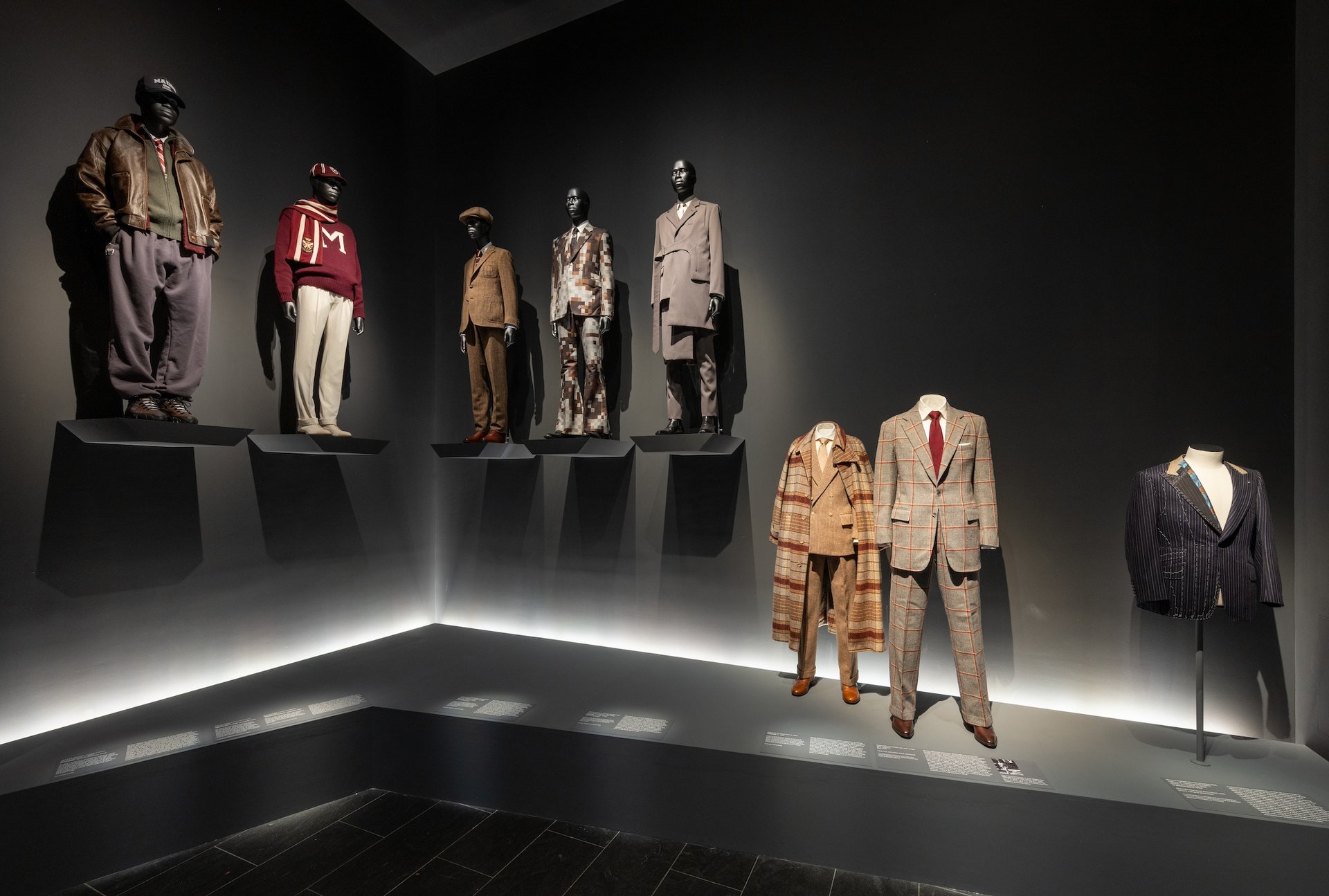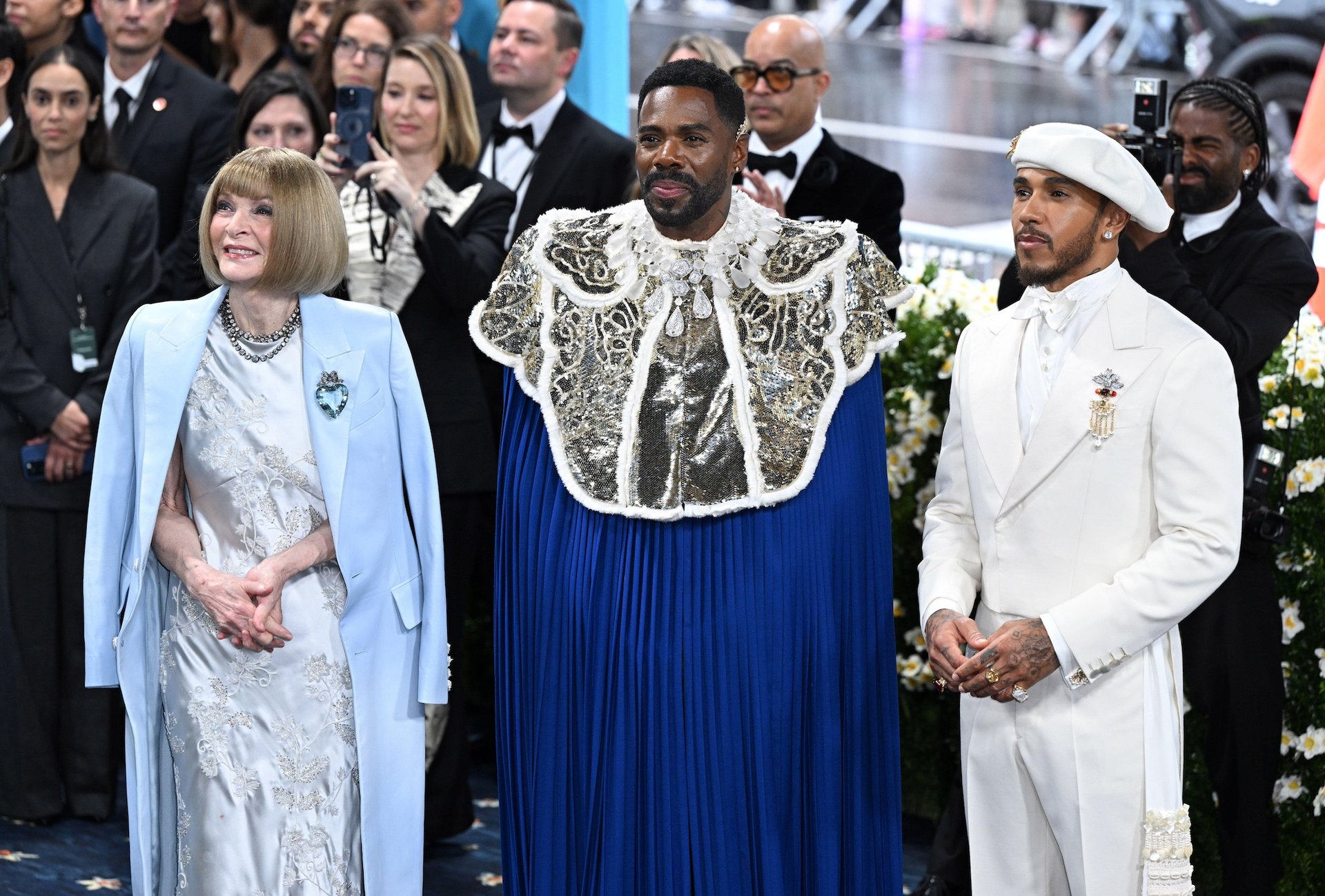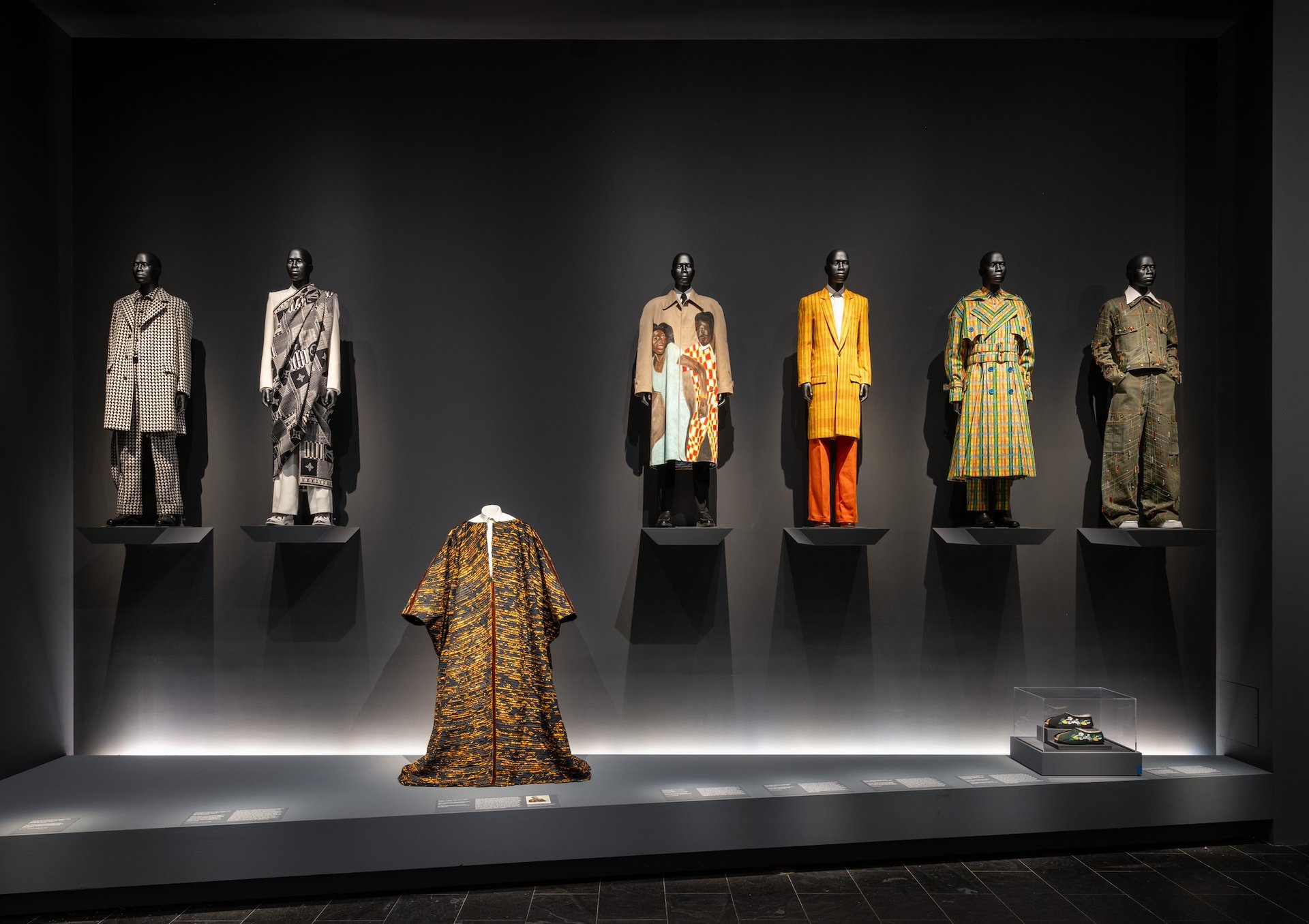On the Met Gala’s Cy Gavin-designed blue carpet, art was front and centre
When it comes to 2025 pop-culture moments, Kendrick Lamar’s Super Bowl Halftime Show bootcut jeans walked, so the Met Gala attendees’ Black-dandy-inspired ensembles could run. Despite being the first solo rapper to headline the much-anticipated show, it was Lamar’s choice of denim duds that dominated the conversation—not just because they were an unexpectedly nostalgic throwback to 2000s trends, or even because they were a decidedly casual alternative to the glitzy ensembles typically worn at arena performances, but also because the figure-hugging style defied today’s conventional heteronormative male pant silhouettes.
While jaw-dropping fashion is ubiquitous on the first Monday in May—when the Metropolitan Museum of Art holds its annual star-studded Costume Institute fundraiser—this year, the boundary-pushing attire soared to new heights. Celebrating the museum’s new exhibition, Superfine: Tailoring Black Style (10 May-26 October), which examines the evolution of Black style in the Atlantic diaspora from the 18th century to today, attendees took inspiration from Black-dandy fashion and the gala’s “Tailored for You” dress code. The event was a success in many respects, including its total tally of $31m, the biggest in the Met Gala’s history.
Years in the making, Superfine represents the visualisation of the 2009 book, Slaves to Fashion: Black Dandyism and the Styling of Black Diasporic Identity by Monica L. Miller, the chair of Africana Studies at Barnard College, Columbia University. “Central to Monica’s thesis is that Black dandyism is both an aesthetic and a political phenomenon,” Andrew Bolton, the Costume Institute’s curator in charge, said at a preview of Superfine on May 5, hours before guests, ranging from Rihanna and Cynthia Erivo to Stevie Wonder and Kamala Harris graced the museum’s hallowed halls. Bolton curated Superfine with Miller, resulting in a thought-provoking examination of the power of style to shape identity and challenge existing hierarchies of race, gender, class, and sexuality. Superfine features a significant amount of fine art, historical documentation and ephemera to further contextualise and illustrate this relationship.
Installation view of the “Freedom” gallery in Superfine: Tailoring Black Style at the Metropolitan Museum of Art Photo © The Metropolitan Museum of Art
“Beginning in the 18th century, and as a result of the slave trade, colonialism and imperialism, African and Western traditions of dress and distinction met,” Miller said. “Just as soon as enslaved Africans were damnified as servants and transformed into objects of conspicuous consumption, they similarly employed the power of clothing, dress, fashion and accessories to challenge its representation and reimagine themselves.” Thus, Superfine is a “story of liberation and emancipation through sartorial experimentation”, Bolton said.
In addition to being the Met’s first menswear exhibition in more than 20 years, Superfine is also the Costume Institute’s first show to directly address the impact of race on style (its two-part, 2021-22 shows In America focused on untold stories and figures in fashion). While this year’s show seems especially important, given US President Donald Trump’s desire to eliminate federal diversity, equity and inclusion programmes (which Met director Max Hollein recently addressed), Bolton said the “catalyst” for Superfine was the 2022 passing of longtime Vogue editor and style icon André Leon Talley, whom The Guardian described as “a true dandy, like those in favourite novels by Balzac and Baudelaire”. Bolton said: “In [Talley’s] memoir, The Chiffon Trenches, André describes how his dapper and dandy appearance was paramount to his position in fashion, and The Guardian’s comment prompted me to think about what happens to the figure of the dandy when he’s racialised.

Installation view of the “Respectability” gallery in Superfine: Tailoring Black Style at the Metropolitan Museum of Art Photo © The Metropolitan Museum of Art
While most Met Gala attendees riffed on the cornerstone of the dandy’s wardrobe—a well-tailored suit—others opted for sumptuous gowns and capes that gave the Met’s 2019 Camp show and fundraiser theme a run for their money. Many stars paid homage to Talley’s penchant for lavish outerwear, in particular Alicia Keys and Serena Williams in Moncler, which conjured the editor’s favoured Norma Kamali Sleeping Bag puffer coats, and Nicole Scherzinger and Shakira in voluminous Prabal Gurung robes, fit for royalty. Ten years after Rihanna broke the internet with her yellow Guo Pei cape, which featured a 16ft train (a look that had Talley’s stamp of approval), it seemed like every guest’s outfit occupied the entirety of the Met’s famed staircase—though perhaps none more so than Diana Ross, in her white, 18ft robe by the Nigerian designer Ugo Mozie.
Flare pants and feathers, tuxes and top hats, cravats and canes—the bevy of statement-making looks easily made for “the swaggiest Met Gala in history”, as the singer and actor Teyana Taylor proclaimed on Vogue’s 2025 Met Gala livestream, which she co-hosted with the actor and comedian Ego Nwodim and the actor and producer La La Anthony. While Taylor wore one of the night’s most show-stopping looks, which she designed with Ruth E. Carter (the first Black woman to win an Oscar for costume design), Anthony paid homage to Virgil Abloh in archival Off-White. The legacy of the late multi-hyphenate, who also was artistic director of Louis Vuitton’s menswear collections, was ever-present in both the Superfine exhibition—which the French maison sponsored—and at the gala, whose co-chair Pharrell Williams has been Louis Vuitton’s men’s creative director since 2023.
Other 2025 Met Gala co-chairs included A$AP Rocky, Colman Domingo and Lewis Hamilton, whose Grace Wales Bonner ivory suit was inspired in part by Barkley L. Hendricks’s white-on-white portraits. While one such painting, Slick(1977), is on view in Superfine, many gala attendees’ stylish ensembles (particularly those featuring Ozwald Boateng’s patterned suits) could easily have been immortalised in the late painter’s canvases.

From left to right, Anna Wintour, Colman Domingo and Lewis Hamilton at the 2025 Met Gala Photo by Doug Peters / EMPICS / Alamy Live News
It seemed artists’ participation was at an all-time high, with gala guests including Rashid Johnson and Amy Sherald—who currently have solo exhibitions at the Guggenheim Museum and the Whitney Museum of American Art, respectively—as well as Jordan Casteel, Arthur Jafa and Lauren Halsey. The director and writer Janicza Bravo donned a custom Tory Burch ensemble made in collaboration with Johnson, whose Anxious Men series and other works were printed on the look. Additionally, the Superfine catalogue features photography by Gagosian-backed photographer Tyler Mitchell, while the gala’s blue carpet, sprinkled with a daffodil motif, was designed by Cy Gavin. Scientifically known as narcissus, Gavin told Voguethat the flower resonated as both the symbol of a new season and a poignant tie to the exhibition’s emphasis on identity.
Other Met Gala looks nodded to various sections of Superfine, which spotlighted the Zoot suit (like Tracee Ellis Ross in Marc Jacobs and Patrick Schwarzenegger in Balmain); Josephine Baker (FKA Twigs in Grace Wales Bonner, Megan Thee Stallion in Michael Kors and countless stars sporting slicked curls); and cultural arenas and locales, like Harlem, where Black style flourished across disciplines (Dapper Dan in his own design and André 3000 in Burberry with a grand piano on his back). Thom Browne’s androgynous designs, worn by Janelle Monáe and Walton Goggins, were tailor-made to fit the Superfine theme. And although the gala featured many monochromatic looks (much like the Met’s 2023 Karl Lagerfeld extravaganza), it was punctuated by bold, colourful moments. These included Regé-Jean Page in an all-red Brioni suit—basically, John Singer Sargent’s Dr. Pozzi at Home (1881), currently on view in the Met’s Sargent and Paris show, reincarnated—Cole Escola in a floral Christopher John Rogers suit, Guillaume Diop in an electric Banyan-like Valentino coat, and Raúl Domingo in a violet sequined suit befitting of Prince (whose Louis & Vaughn white ruffled shirt is also featured in Superfine).
At the exhibition preview, Colman Domingo shared a quote by the Tony Award-winning playwright and director George C. Wolfe: “God created Black people, and Black people created style.” While the actor and Met Gala co-chair alluded to how this would be on full display in Superfine—a revelatory and must-see show—he also foreshadowed how the gala’s exquisite ensembles would raise the bar for red-carpet fashion.

Installation view of the “Heritage” gallery in Superfine: Tailoring Black Style at the Metropolitan Museum of Art Photo © The Metropolitan Museum of Art
- Superfine: Tailoring Black Style, 10 May-26 October, Metropolitan Museum of Art, New York




